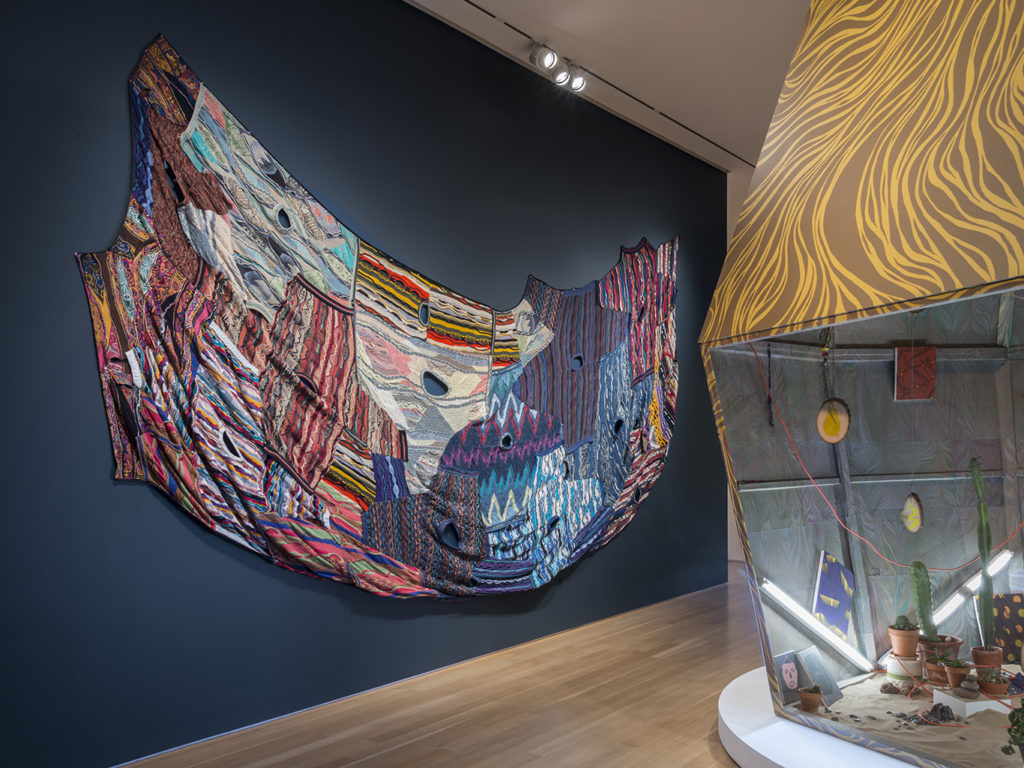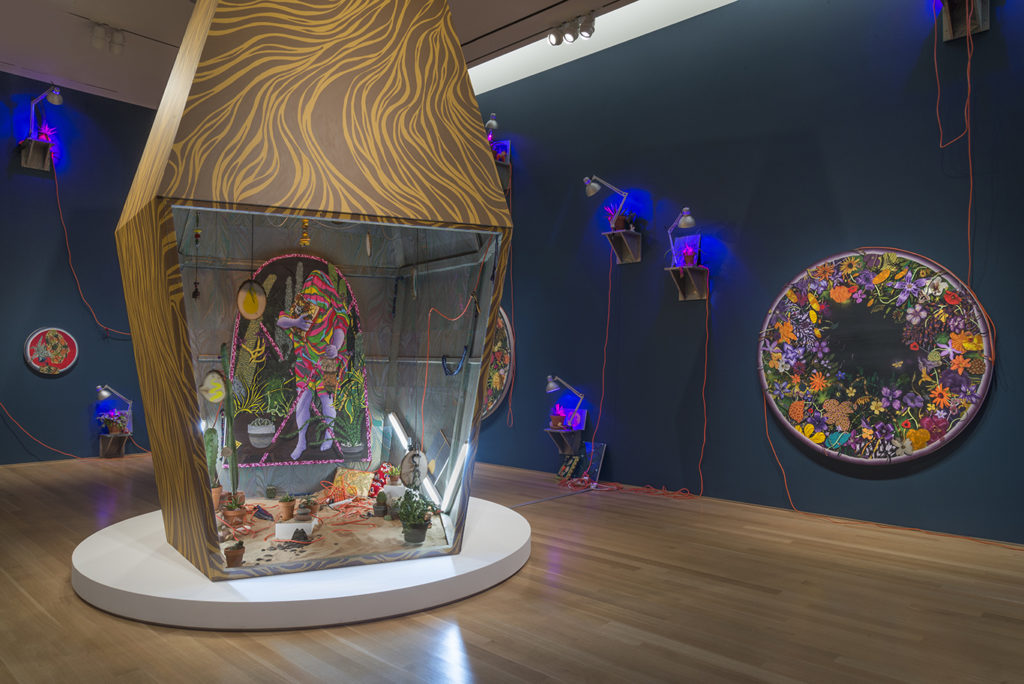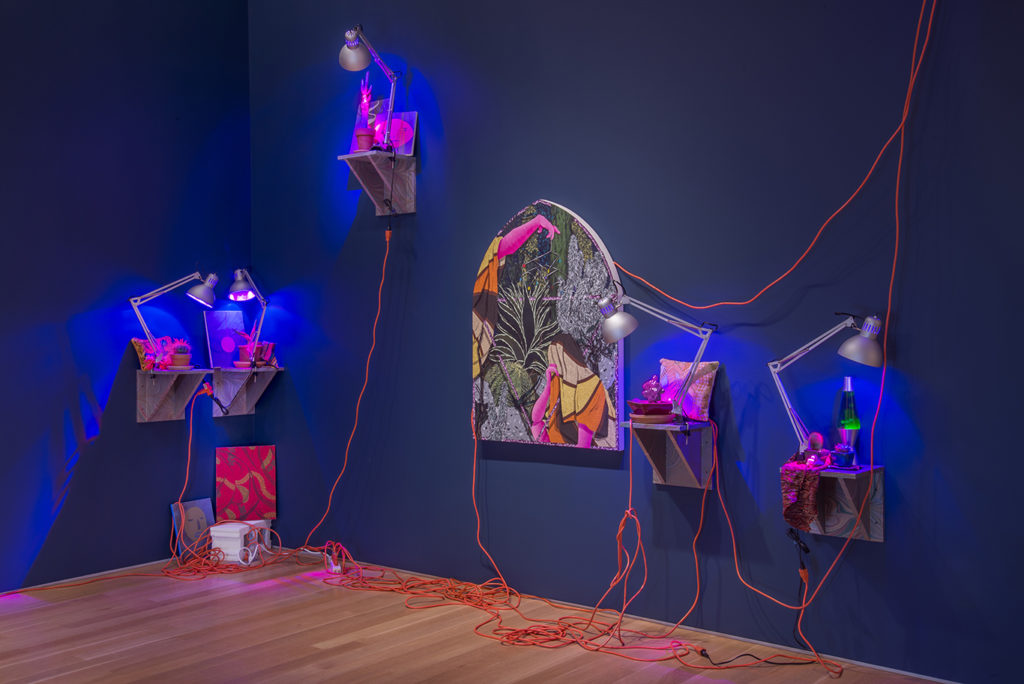A playful, mysterious and honest exploration into identity: Amir H. Fallah
Amir H. Fallah is an Iranian artist who works in many mediums, from 3D installations to murals; yet he is mostly known for his portraits where he covers the subject with fabric from their own belongings. Fallah told us about the conceptual frame, the evolution and the principles of his art.
Interview by Ege Yorulmaz
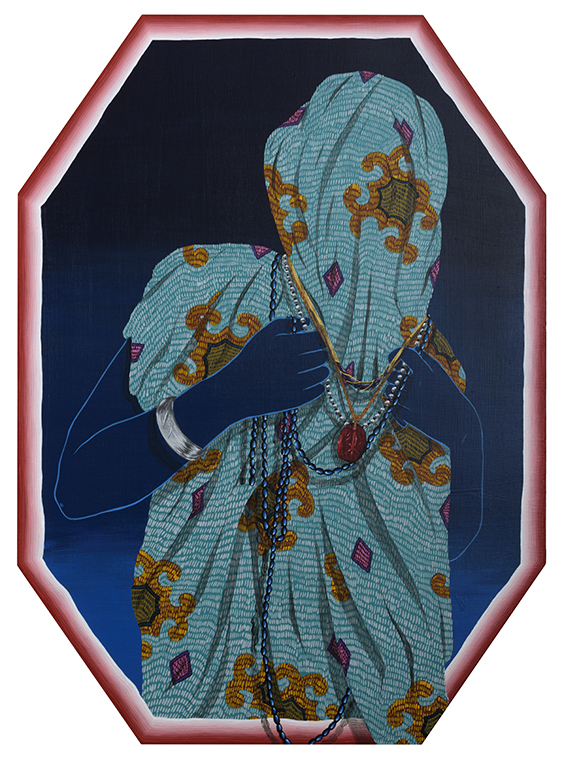
Peering Through, 2016, acrylic and colored pencil on panel, 26”x36”
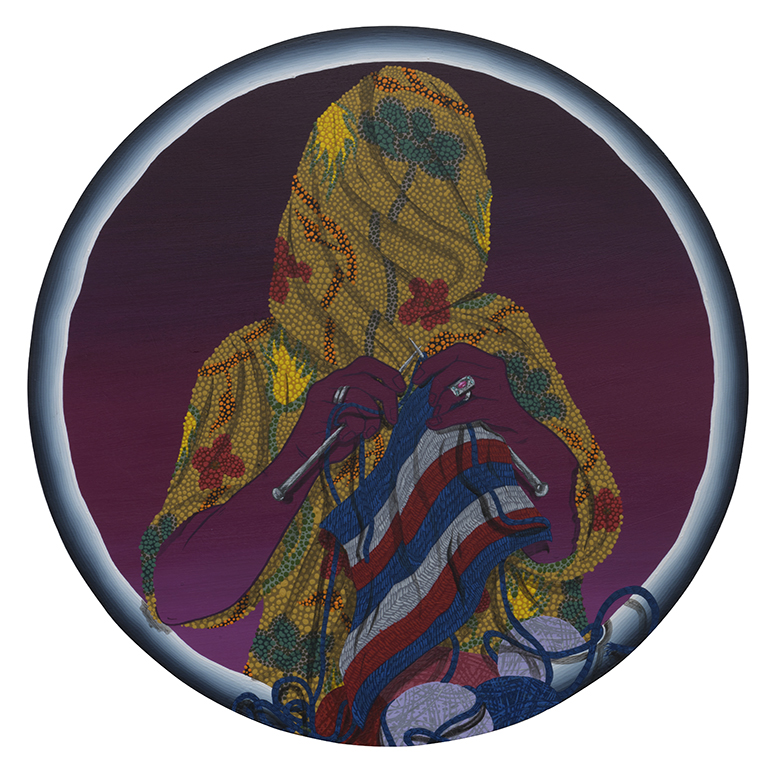
Day Of Recollection, 2016, acrylic and colored pencil on panel, 24” in diameter
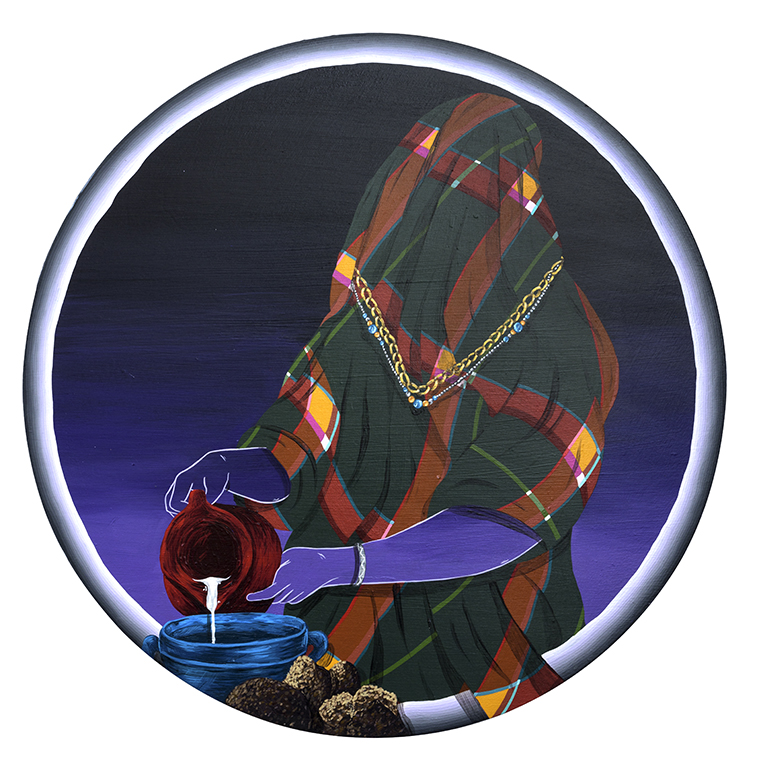
Milk Maid, 2016, acrylic and colored pencil on panel, 24” in diameter
Your portraits are an exploration of portraiture. How did your understanding of art come here? Can you tell us a bit about your inspirations and how your art evolved in time?
I’ve always been interested in real stories and people. When I first began making art all of my work revolved around my personal experiences. Not all of it was self portraits but it was certainly biographical. As the work developed I became interested in other people’s lives and began to explore how I could use their life stories as a starting point for work. I don’t think of my work as portraiture in the traditional sense. I’m more interested in stretching the meaning of what can be a portrait and turning the history of portraiture on its head. Currently I’m working on a show about an artist and there isn’t one full figure or face in the entire show. The paintings are mostly landscapes but I think of them as portraits.
Can you tell us about your production process from the beginning to the end?
There’s a few different projects and mediums that I am working in but I’m mostly known for my figurative paintings where the figure is completely covered with fabric and personal possessions. These paintings all begin with a photo shoot where I go to my subjects home and do an informal interview with them. We walk through their home and discuss the various objects, artifacts, pieces of décor and clothing that fills their home. I take these objects and create a still life of sorts around the subject. The figures face is always concealed only leaving traces of the body such as hands or feet. These photographs are later taken to the studio and used as the basis for paintings. The paintings are not a one-to-one translation of the photographs so many changes and alterations are made during the painting process.
How do you choose your sitters? Are they friends? If not, what kind of a choosing process do you have for them? Do you have any interesting memories from your sitters that you can share with us?
When I first began, I mostly painted friends but now I’ve expanded into several new directions. I’ve done a project where I created an entire body of work about an artist I’ve never met and I’ve done a series of commissions of collectors. I’d say the most interesting iteration has to be a body of work based around an estate sale. I picked an estate sale at random from an online listing and purchased all the belongings of the family. The parents of the family had passed away and 60 years of possessions were sold off by the surviving family members. I took the families belongings back to the studio and spent the next six months digging through diaries, scrapbooks and home movies. Through these Items I created an entire exhibit that was a portrait of this family that I had never met.
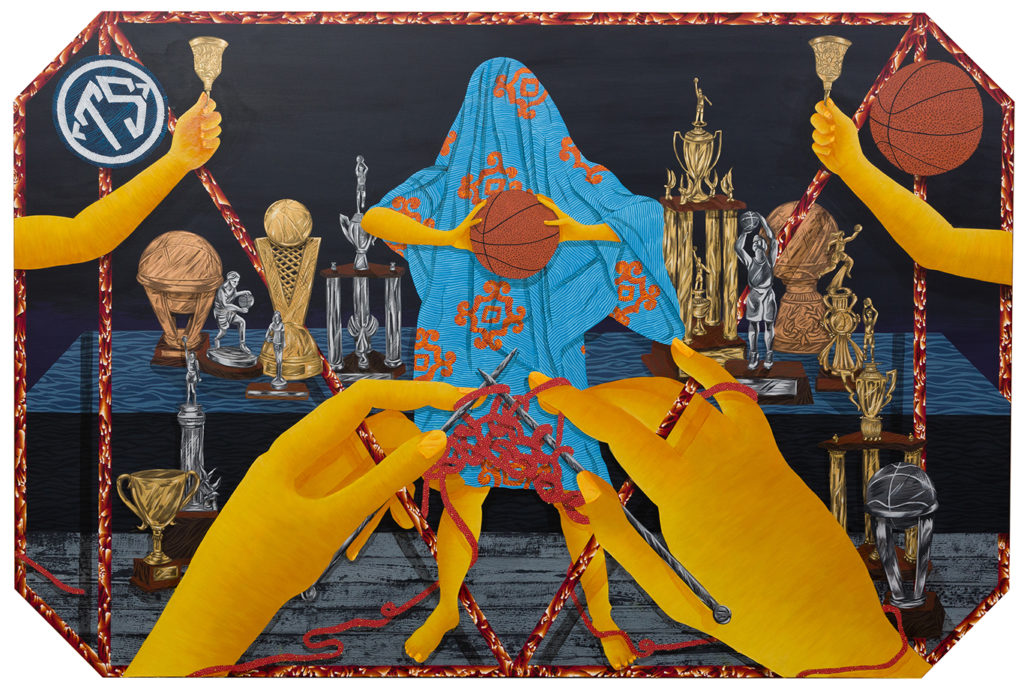
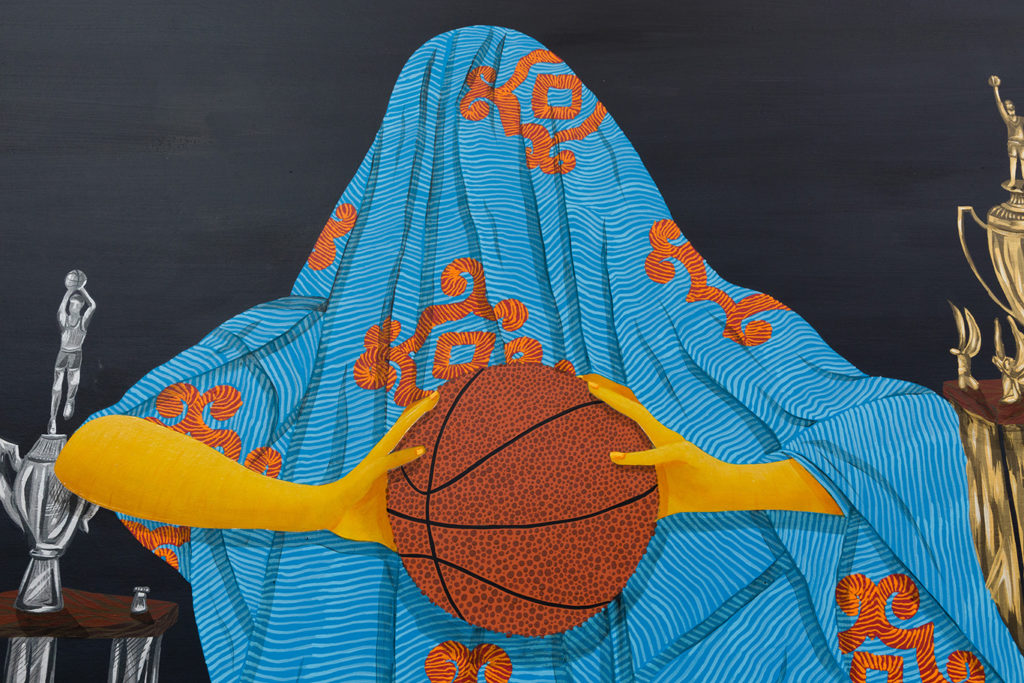
First Person Shooter Game, 2016, Acrylic, colored pencil, collage and oil on paper mounted to canvas, 60 x 90 inches
From the process of your portrait making, can we say it’s a lot about identity? If so, other than the portraits, how much of your work deals with identity and intimacy? Obviously all your portraits are very intimate. How do you personally feel about this?
All my work is extremely intimate and deals with identity in one way or another. I’m dealing with peoples life stories and during my investigation/interview process I am told extremely personal stories about their lives, families, struggles, hopes and desires.
How did you end up with using fabric-looking covers as a big subject in your portraiture? It is very much elusive for the form but how does it work in the contextual meaning?
For me the draping of the figures was a means to an end. I wanted to conceal as much of the figures physical identity while still showing the silhouette of the body. For me it’s a way to abstract and complicate the figure. It conceals the figures weight, height, age, and even sex. With that information taken away you are left to focus on the objects that they are surrounded with. I find it to be a more honest way to go about portraiture. Physical features are misleading and usually don’t tell you much about who the person is.
Does your way of representing your subjects have some bigger meaning? What do they say politically?
Because I’m Iranian people immediately think that I’m referencing the hijab or burkas but this isn’t really my aim. I obviously see the reference but I wonder how much of that read on the work is based on my cultural background. I don’t think it would come up as much If I was an American named John Smith.
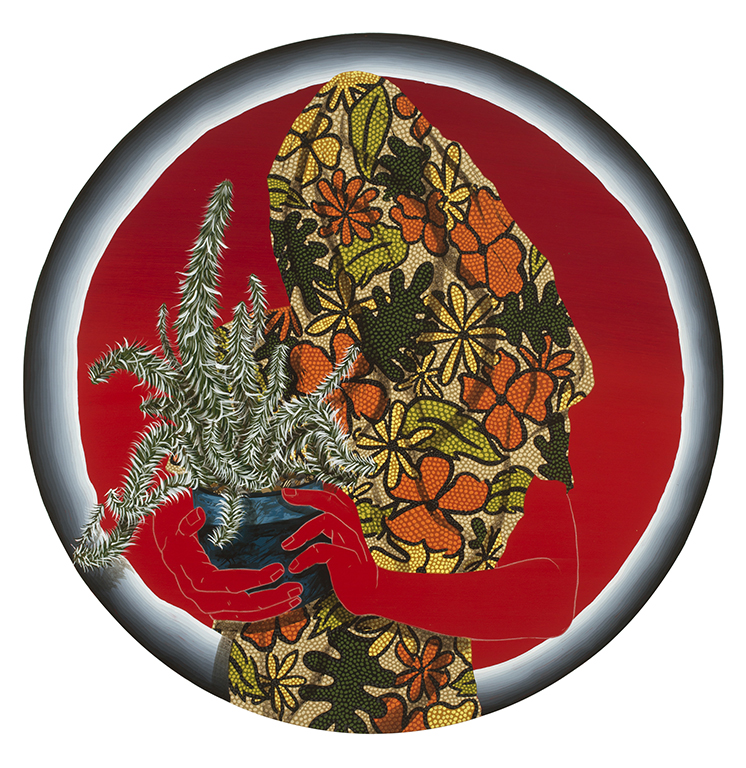
Perpetual Grip, 2015, 24” in diameter, acrylic and colored pencil on panel
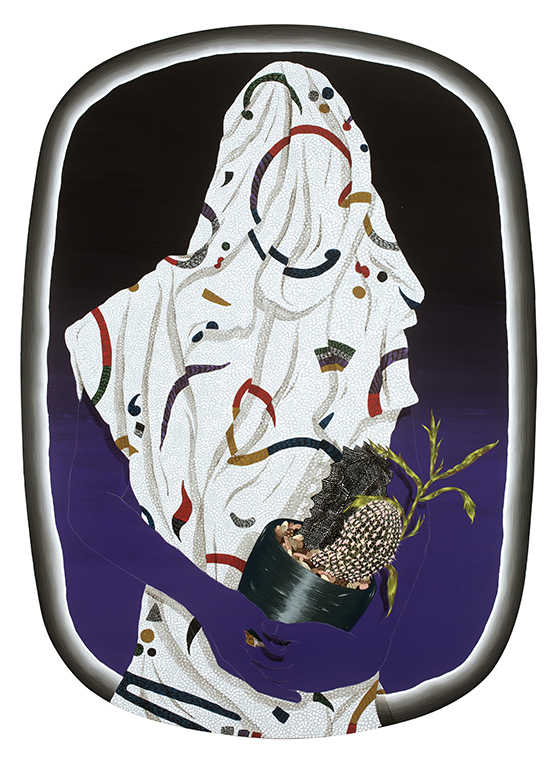
Undying Devotion, 2015, 26”x36”, acrylic and colored pencil on panel
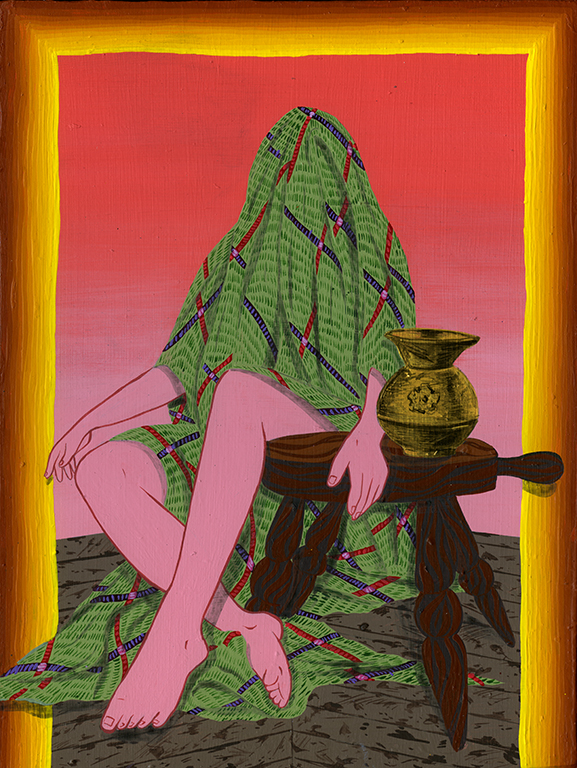
Reflect, 2016, acrylic and colored pencil on paper mounted to canvas, 9”x12
So far all our questions were regarding the paintings in your The Collected series. And those have a significant subject and space relationship. What about The Arrangement? It looks a bit more complex and obscure in style to me. Can you tell us a bit about the background of The Arrangement and how it works?
This body of work came with my interest in Dutch and Flemish still lives made during the Golden Age. All of that work is deeply coded with symbolic meaning and references. I’m interested in the idea that a floral still life can have deeper references to the cycles of life and death and beyond. Interestingly enough I recently began to make a new body of work that actually combines some of the motifs in The Collected and The Arrangement which I’ll be showing later this year in Dubai at The Third Line.
Your 3D works are completely different from your painting both in form and in style. What kind of a fresh start do you get when you change the medium? How does this fresh start effect what you work on in your installations?
I consider myself to be primarily a painter but I think of each exhibit as an all-encompassing installation. For every show I try to create a very specific space for the paintings to live in. It’s a way to expand the dialogue in the paintings in new directions and bring a bit of experimentation into the exhibition space. Just last year I did several wall paintings, large two-storey architectural structures, clay sculptures, photographs and a sound piece.
Can you foresee which direction your art is going to go. Will you continue to work on exploration of painting or will you be engaged in more 3D projects? Do you have anything new or experimental you want to work on?
For the next few years I’ll be working on site-specific installations that combine a wide variety of mediums. Every show I do is based on one theme and all the work comes from that theme. One project that I’m dying to pursue is a video piece that I’ve been thinking about for two years. It’s a large project with many moving parts so getting that off the ground would be exciting.
We learnt that you spent some time in Turkey in your childhood. When and where were you in Turkey? And were you back here later?
When I was five years old I spent 1.5 years in Turkey going between Ankara and Istanbul. I was quite young but I have fond memories of learning to swim on the beautiful beaches and going to kindergarten where I learned to speak fluent Turkish. Since then I’ve unfortunately forgotten how to speak Turkish but I’d love to go back someday particularly because I would want to do an exhibit about my time there. Hopefully that happens sooner than later.
